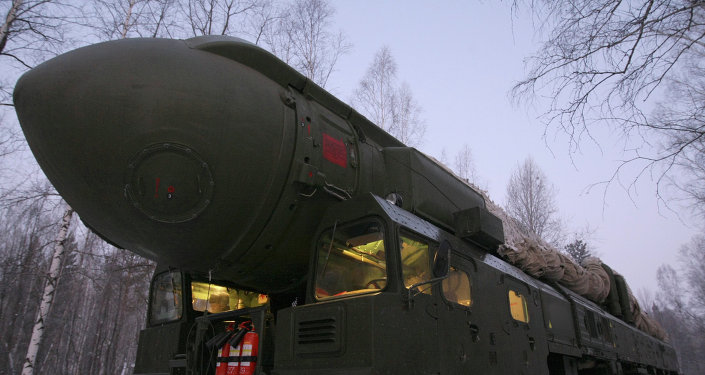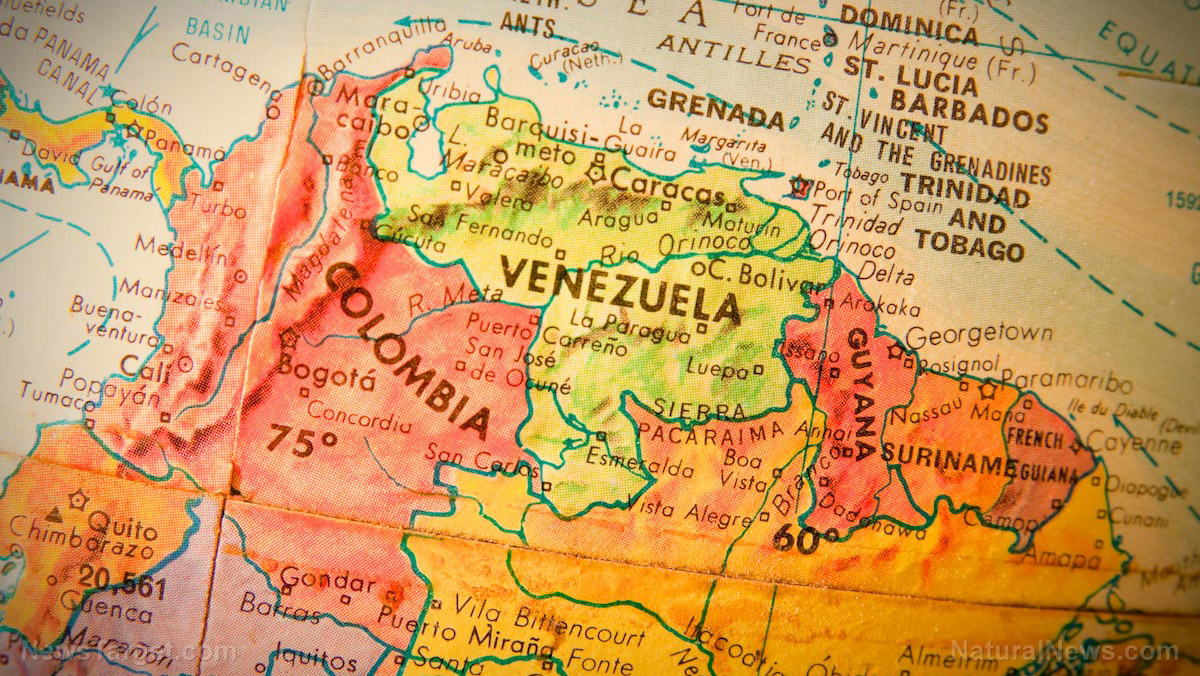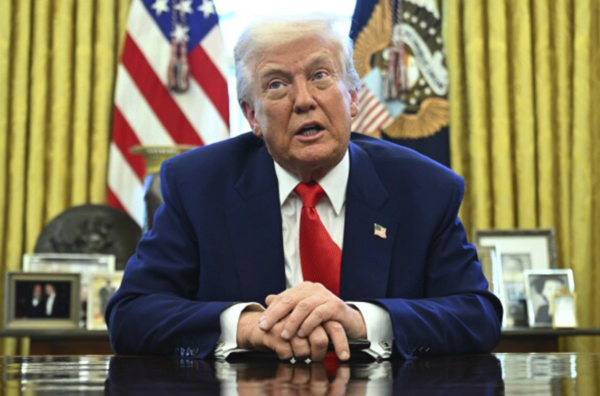 Parler
Parler Gab
Gab
- Russian officials, including Alexei Zhuravlyov, state there are "no obstacles" to providing Venezuela with advanced weapons, including the Oreshnik hypersonic missile (Mach 10). The missile is unstoppable by current U.S. defenses, capable of striking Europe within an hour if launched from Russia or Belarus—now potentially threatening U.S. assets from Venezuela.
- Venezuelan President Nicolás Maduro personally requested upgrades to Venezuela's air defenses, including Su-30MK2 fighter jets and 14 missile sets, fearing U.S. intervention. Venezuela is also deepening military ties with China and Iran, forming an anti-U.S. alliance.
- The U.S. justifies Caribbean operations as anti-drug efforts but has conducted strikes killing alleged Venezuelan-linked traffickers. Russia condemns U.S. actions as "excessive military force," while President Donald Trump downplays war rumors but criticizes Maduro's regime.
- The Oreshnik's deployment in Venezuela could mirror the 1962 Cuban Missile Crisis, placing hypersonic weapons near U.S. shores. Russia's Kalibr cruise missiles could also be hidden in merchant ships, making detection nearly impossible before launch.
- Russia's electronic warfare and radar systems (like Voronezh) threaten U.S. stealth tech and naval operations. The U.S. may need to reposition Aegis defenses, enhance surveillance, and prepare for cruise missile threats. Analysts warn that without diplomatic solutions, this could escalate into a new Cold War front in America's backyard.
Russia's hypersonic threat
The Oreshnik, described by Russian officials as an intermediate-range ballistic missile (IRBM), is reportedly capable of reaching speeds of Mach 10—far outpacing any existing U.S. missile defense systems. According to Russian President Vladimir Putin, a conventional strike with multiple Oreshnik missiles could be as devastating as a nuclear attack. First deployed in Ukraine in November 2024, the missile has been touted by Moscow as unstoppable, capable of striking any target in Europe within an hour if launched from Russia or Belarus. Now, Russia appears ready to extend this capability to Venezuela—a move that would place U.S. assets in the Caribbean and possibly even the U.S. mainland within striking range. Zhuravlyov warned that Washington should brace for surprises, stating: "Russia is actually one of Venezuela's key military-technical partners. We supply the country with nearly the entire range of weapons, from small arms to aviation. The details and volumes of deliveries are classified, so the Americans might be in for a surprise."Venezuela's desperate appeal
The potential missile transfer comes amid heightened U.S. military pressure on Venezuela. President Nicolás Maduro reportedly reached out to Putin personally for assistance following a surge in U.S. naval and aerial operations in the Caribbean—ostensibly targeting drug trafficking but widely perceived as a prelude to broader intervention. Maduro reportedly requested upgrades to Venezuela's air defenses, including the restoration of Russian-made Su-30MK2 fighter jets and the acquisition of 14 missile sets. In a letter to Putin, Maduro described the Sukhoi fighters as "the most important deterrent" against U.S. aggression. According to BrightU.AI's Enoch, Su-30MK2 is a twin-engine, supermaneuverable multirole fighter aircraft developed by Russia's Sukhoi Aviation Corporation. It is an export variant of the Su-30MK, which is itself a derivative of the Su-27 Flanker. The MK2 variant is designed for all-weather, air-to-air combat and can also perform air-to-surface missions. Venezuela has also sought military support from China and Iran, signaling a deepening alliance among U.S. adversaries.U.S. strikes and Russian condemnation
The Trump administration has justified its military buildup as necessary to combat drug trafficking, launching over a dozen strikes since September that have killed more than 60 people, many allegedly linked to Venezuelan drug operations. Russia has condemned these operations, with Foreign Ministry spokeswoman Maria Zakharova calling them "excessive military force." Meanwhile, U.S. officials have downplayed the likelihood of direct conflict with Venezuela. President Donald Trump, in a recent 60 Minutes interview, dismissed war rumors but criticized Maduro’s regime: "I doubt it. I don't think so. But they've been treating us very badly, not only on drugs—they’ve dumped hundreds of thousands of people into our country that we didn't want, people from prisons—they emptied their prisons into our country."A new Cuban missile crisis?
The prospect of Russian hypersonic missiles in Venezuela has drawn comparisons to the 1962 Cuban Missile Crisis, when Soviet nuclear deployments just 90 miles from Florida brought the world to the brink of war. While no final decision has been announced, Zhuravlyov's remarks suggest Moscow is testing U.S. resolve. The Oreshnik's unmatched speed and maneuverability—coupled with its ability to carry multiple independently targeted warheads—would pose an unprecedented challenge to U.S. missile defenses. Additionally, Russia's Kalibr cruise missiles, if deployed in containerized Club-K launchers, could be hidden aboard merchant ships or trucks, making them nearly impossible to detect before launch.U.S. military at a disadvantage?
Analysts warn that the U.S. may be unprepared for this escalation. Russia's electronic warfare capabilities have already reportedly disrupted U.S. naval systems, as seen with incidents involving the USS Donald Cook. Meanwhile, advanced Russian radar systems like Voronezh can allegedly detect stealth aircraft, undermining billions in U.S. stealth investments. With Putin also announcing the imminent deployment of the Sarmat ICBM—nicknamed "Satan II"—the Kremlin appears to be flexing its military muscle while the U.S. struggles with domestic disarmament trends, including declining gunpowder production and reliance on foreign rare earth minerals.What comes next?
The U.S. has yet to formally respond to Russia's missile threat. However, experts warn that any deployment would force Washington to:- Reallocate Aegis missile defense ships to the Caribbean
- Expand surveillance operations to track mobile missile launchers
- Prepare countermeasures against potential cruise missile strikes
India’s oil dilemma: Sanctions force shift away from Russian crude
By Belle Carter // Share
U.S. reopens jungle warfare training in Panama amid rising tensions with Venezuela
By Kevin Hughes // Share
U.S. plans to construct $500M military base near Gaza border amid escalating tensions
By Kevin Hughes // Share
U.K. halts intelligence sharing with U.S. over “illegal” drug boat strikes, straining key alliance
By Belle Carter // Share
Trump’s $80 billion nuclear push for AI: A high-stakes gamble or recipe for disaster?
By Kevin Hughes // Share
Trump EXEMPTS Hungary from U.S. sanctions on Russian energy for one year
By Ramon Tomey // Share
Governments continue to obscure COVID-19 vaccine data amid rising concerns over excess deaths
By patricklewis // Share
Tech giant Microsoft backs EXTINCTION with its support of carbon capture programs
By ramontomeydw // Share
Germany to resume arms exports to Israel despite repeated ceasefire violations
By isabelle // Share










